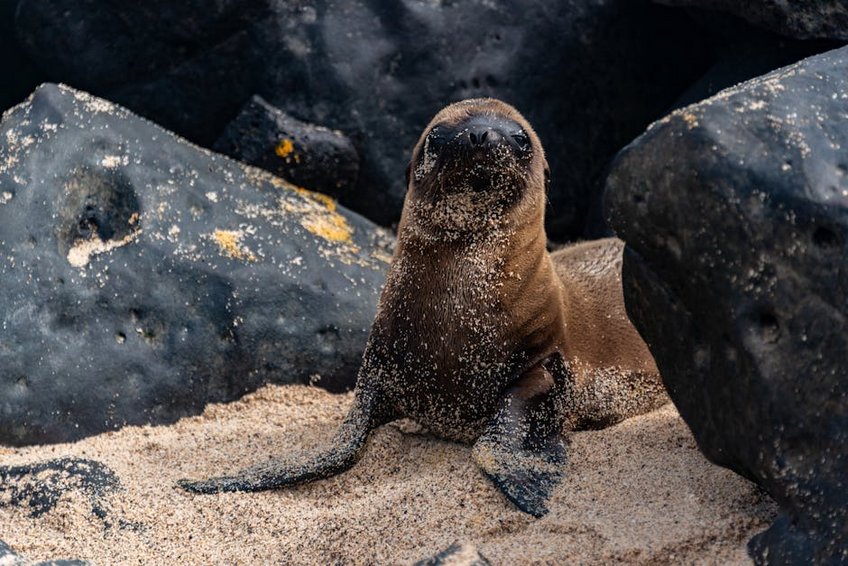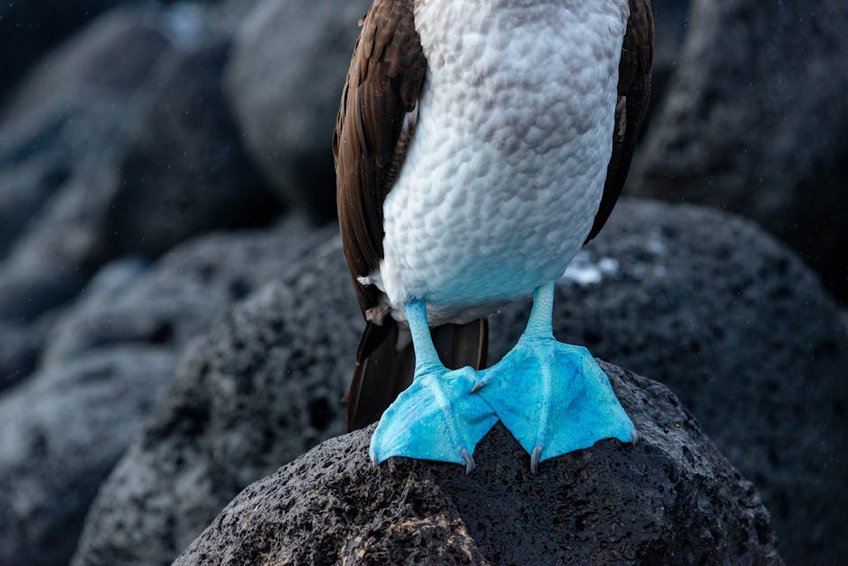Ecuador Galápagos Islands Wildlife: Unique Animal Encounters Guide
Exploring Ecuador Galápagos Islands wildlife offers unparalleled access to species found nowhere else on Earth, from giant tortoises to marine iguanas. Your adventure connects you with Darwin’s evolutionary laboratory through guided tours, snorkeling excursions, and national park regulations protecting fragile ecosystems. This guide covers essential planning, must-see species, and practical tips for maximizing your wildlife experience while respecting conservation efforts.
Essential Galápagos Islands Information
The Galápagos archipelago comprises 13 major islands and dozens of smaller islets formed by volcanic activity over millions of years. Located 600 miles off Ecuador’s coast, these islands straddle the equator with unique microclimates influencing wildlife behavior and vegetation patterns. You’ll encounter dramatically different landscapes across islands, from arid lowlands to lush highland forests.
Charles Darwin’s 1835 visit revolutionized biological science through his observations of finch beak variations and tortoise adaptations. Today, the Galápagos National Park Directorate manages visitor access through strict guidelines preserving endemic species and marine reserves. Your visit directly supports conservation through park entrance fees and regulated tour operations.
Geographical Features and Climate
Understanding the islands’ geography helps plan your wildlife viewing strategy effectively.
- Volcanic landscapes create distinct habitats supporting specialized species like lava lizards and flightless cormorants across different elevation zones.
- Ocean currents bring nutrient-rich waters attracting marine mammals, with water temperatures ranging 65-80°F (18-27°C) seasonally.
- Altitude variations produce microclimates where highland areas receive more rainfall supporting Scalesia forests and giant tortoise habitats.
- Budget travelers spend $1,500-2,500 USD on land-based tours staying in hostels, using public ferries between islands, and joining day trips from Puerto Ayora.
- Mid-range visitors invest $3,000-5,000 USD for smaller yacht cruises with naturalist guides, better cabins, and included meals and activities across multiple islands.
- Luxury experiences cost $6,000-10,000 USD featuring premium cruise ships with suites, gourmet dining, and exclusive landing sites with expert photographic guides.
- Galápagos Conservancy
- National Geographic Galápagos Guide
Conservation History and Regulations
Galápagos conservation began formally in 1959 when 97% of land area received protected status as Ecuador’s first national park. The Charles Darwin Research Station established that same year coordinates scientific studies and breeding programs for endangered species like the Pinzón Island tortoise. Your visit requires adhering to park rules maintaining six-foot distance from wildlife and never feeding animals.
Modern conservation faces challenges from invasive species and climate change affecting marine iguana food sources and bird nesting patterns. Park authorities limit visitor numbers through licensed tour operators and designated landing sites preventing habitat degradation. Your tour fees fund ongoing eradication programs protecting native species from rats, cats, and other introduced predators.
Endemic Wildlife Overview
The islands host approximately 9,000 species with 25% found exclusively in this archipelago. Marine iguanas represent the world’s only seagoing lizards, while blue-footed boobies perform elaborate courtship dances on rocky shores. Giant tortoises can live over 100 years, with distinct shell shapes evolving on different islands.
Darwin’s finches demonstrate adaptive radiation with 13 species showing beak variations specialized for different food sources. Flightless cormorants lost aerial ability through evolution, instead developing powerful legs for underwater hunting. Galápagos penguins survive at the equator thanks to cool Cromwell Current bringing rich fishing grounds.

Alt: “galapagos-islands-marine-iguana-basalt-rocks-ocean”
Ecuador Galápagos Islands Wildlife – Planning Your Trip
Planning your Ecuador Galápagos Islands wildlife adventure requires careful timing between peak wildlife activity months and favorable weather conditions. June through November offers cooler water temperatures attracting more marine life, while December through May provides warmer seas for snorkeling. You’ll need to book tours 6-9 months early for popular dates, especially around holiday periods and summer breaks.
Budget considerations include park fees ($100 USD), transit control card ($20 USD), and cruise or land-based tour packages starting at $1,500 USD. Travel insurance covering emergency medical evacuation proves essential given the remote location and active itinerary requirements. Physical preparation should include swimming practice and broken-in walking shoes for uneven volcanic terrain.
Documentation requires a valid passport with six months remaining validity, though most Western nationals don’t need visas for Ecuador visits under 90 days. Vaccinations for hepatitis A and typhoid are recommended, while malaria prophylaxis isn’t typically necessary for island visits. You’ll fly from Quito or Guayaquil to Baltra or San Cristóbal airports with limited daily flights.
Best Time to Visit Galápagos Islands
Visit between December and May for calmer seas, warmer water temperatures around 80°F (27°C), and peak bird nesting activity across the archipelago. This period brings occasional brief rain showers but generally sunny conditions ideal for photography and beach landings. Marine life remains abundant with sea turtles nesting and land birds beginning courtship displays.
June through November offers cooler water temperatures around 65°F (18°C) attracting more penguins, albatross, and larger marine mammals. This season features garúa mist in highlands but clearer waters for snorkeling with sharks and rays. Wildlife viewing excels during these months despite stronger currents requiring better swimming skills.
Budget Planning and Costs
Your Galápagos budget varies significantly based on accommodation style and tour inclusions.
Essential Preparation Checklist
Pack quick-dry clothing, reef-safe sunscreen, motion sickness medication, and waterproof bags for wet landings from zodiac boats. Photography gear should include telephoto lenses (200-400mm), underwater housing, and extra memory cards capturing wildlife behaviors. broken-in hiking shoes provide traction on slippery lava rocks during guided walks.
Book flights from mainland Ecuador with buffer days preventing missed connections to island itineraries. Secure travel insurance covering adventure activities and medical evacuation from remote locations. Learn basic Spanish phrases enhancing interactions with crew and naturalist guides during your expedition.
Top Wildlife Attractions and Activities
Galápagos wildlife viewing occurs through guided tours only, with each island offering unique species encounters and photographic opportunities. Santa Cruz Island hosts the Charles Darwin Research Station where you can observe giant tortoise conservation programs. Isabela Island’s wetlands shelter flamingos, while Fernandina’s coastline boasts the largest marine iguana colonies globally.
Snorkeling excursions reveal another dimension of biodiversity with sea lions, penguins, and tropical fish inhabiting volcanic rock formations. Night diving opportunities showcase bizarre marine creatures like red-lipped batfish and octopus species found only in these waters. Kayaking along sheltered coves provides silent approach methods for observing shorebirds and resting marine mammals.
Must-See Wildlife Highlights
Giant tortoises roam freely in Santa Cruz highlands, with reserve visits allowing close observation of these ancient reptiles in misty Scalesia forests. The Tortoise Breeding Center on Isabela Island demonstrates conservation success stories through hatchling releases and species rehabilitation. Early morning visits avoid crowds and capture better photographic conditions in natural lighting.
Blue-footed booby colonies perform comical mating dances on North Seymour Island from April through December, with peak activity during cooler months. Marine iguanas blanket the black lava rocks of Fernandina Island, sneezing salt crystals after diving for algae. Galápagos penguins dart through waters around Bartolomé Island, often approaching snorkelers curiously.
Sea lion pups play in shallow waters across multiple islands, with careful observation revealing hunting lessons from mothers in tidal pools. Flightless cormorants display vestigial wings on Isabela’s western shores, while waved albatross perform elaborate beak-clacking courtship on Española Island from April to December. Land iguanas forage for cactus fruits on South Plaza Island, their yellow coloration contrasting with red Sesuvium plants.
Hidden Gems and Local Favorites
Punta Pitt on San Cristóbal Island hosts all three booby species (blue-footed, red-footed, Nazca) in one location, accessible through specialized tours. Los Tuneles lava formations near Isabela create surreal snorkeling environments with sea horses, turtles, and harmless reef sharks. These sites require longer boat rides but reward with intimate wildlife encounters away from main tourist routes.
Highland tortoise reserves on Santa Cruz offer walking trails through transitional vegetation zones where you might spot vermilion flycatchers and short-eared owls. Local fishermen sometimes permit accompanying their boats for day trips observing dolphin pods and marine bird feeding frenzies. These authentic experiences develop through relationships with community tourism operators in Puerto Ayora.
Wildlife Photography Techniques
Use aperture priority mode maintaining fast shutter speeds above 1/500sec freezing animal motion during active behaviors like bird takeoffs. Polarizing filters reduce water surface glare capturing underwater subjects more clearly during snorkeling sessions. Early morning and late afternoon golden hours provide soft directional lighting enhancing texture in reptile scales and bird plumage.
Practice ethical photography by never using flash with nocturnal species and maintaining required distances from nesting birds. Waterproof camera housings prove essential for capturing marine interactions, while teleconverters extend lens reach without adding bulk. Local naturalists know animal habits best, so position yourself where they predict interesting behaviors will occur.
Practical Travel Information
Galápagos transportation operates through a hub system with most visitors arriving at Baltra Airport then transferring to Puerto Ayora on Santa Cruz Island. Inter-island travel uses public ferries running scheduled routes or private yacht transfers arranged through tour operators. You’ll need to account for baggage weight limits (typically 44lbs/20kg) on inter-island flights and boat transfers.
Accommodation ranges from budget hostels in port towns to luxury eco-lodges with private balconies overlooking wildlife-rich bays. Booking directly with licensed operators ensures compliance with national park regulations and support for local conservation initiatives. Advance reservations prove crucial during peak seasons from June through August and December through January.
| Accommodation Type | Features and Location | Price Range (USD) |
|---|---|---|
| Budget Hostels | Shared bathrooms, basic amenities, central Puerto Ayora location | $40-80/night |
| Mid-Range Hotels | Private bathrooms, air conditioning, swimming pools, tour desks | $120-250/night |
| Eco-Lodges | Sustainable design, naturalist guides, remote locations near reserves | $300-500/night |
| Cruise Ships | All-inclusive packages, multiple island visits, expert guides | $400-800/night |


